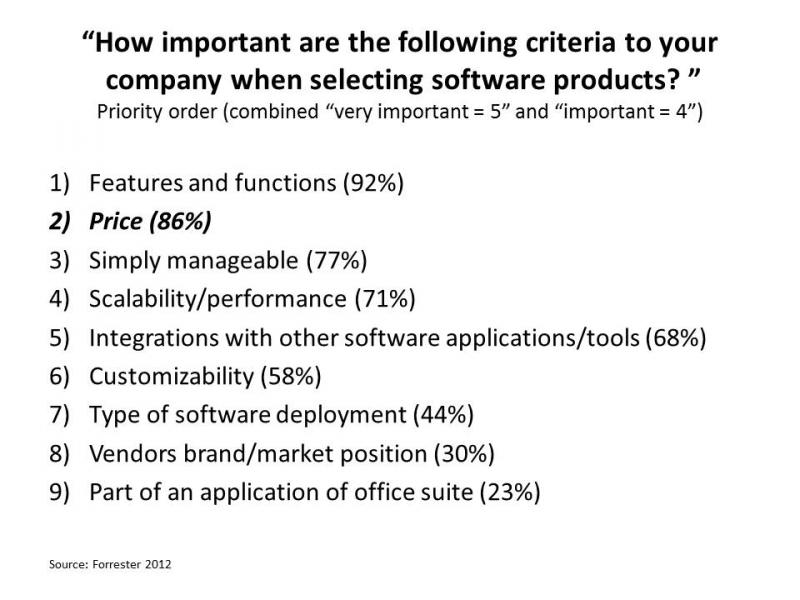ITSM Tools: Is What You Pay Linked To Value?
A little while back Martin Thompson at the ITSM Review wrote an interesting blog on the complexity of IT service management (ITSM) tool pricing: http://www.theitsmreview.com/2011/09/ouch-o-meter/…I particularly liked his term "ouch-o-meter." It’s well worth a read.
It's something that has continued to puzzle me – what it would cost to buy AND implement an ITSM tool, PLUS any process or people-based change via professional services or third-party consultancy? Oops, I nearly forgot support and maintenance there too. To make matters worse, this is potentially an unknown and unbudgeted for cost that appears every 5-7years due to tool churn if us analyst types are to be believed (I have an outstanding action to include ITSM tool churn-related questions in a survey). But we need to park the churn issue for now and focus on cost or, more specifically, pricing models.
What did an ITSM tool cost in 2008? Or how long is a piece of string?
I cast my mind back to when I started as an industry analyst in 2008 and the complexity of not only which tools/applications, modules, or features needed to be costed-in but also the 30-50% "surcharge" for the professional services and 20-22% for support and maintenance. Then of course we needed to apply volume-based discounts and maybe something else based on the "customer-logo-appeal," the customer’s sourcing and vendor management strength/capabilities, and/or the sales person's need to hit quota at that point in time. I've probably oversimplified this too, feel free to educate me.
Jumping forward to the Teenies* …
Thankfully the SaaS delivery model and its subscription-based pricing has simplified this somewhat (a simpler rack rate price and no discrete support and maintenance charge). But this still leaves the complexity of knowing how best to buy the right volume of licenses or subscriptions from an investment optimization perspective. The ability to have concurrent user licensing/subscriptions is an obvious help, and so it's great to see some vendors also offer the concurrent option with the SaaS subscription model.
But we still aren't close enough to license/subscription optimization IMO. SaaS (or even on-premises software using subscription-based licensing) is viewed as a consumption-based licensing model but is it really? Unless you have the ability to truly flex what you pay for based on what you are actually using it isn't truly consumption-based. For example can you flex the number of subscriptions to allow for a two-month increase in demand in terms of users? Or are you still paying for SaaS subscriptions where the service is hardly used or not used at all?
Looking even further forward …
For a few years now we've heard whispers of software/SaaS vendors charging customers for actual consumption of their software or services. “Pay-per-use” has been an oft-used term; such as paying per incident, problem, or change transaction for an ITSM offering. But while I’ve heard of service providers trying out such possibilities, I've yet to see it offered for ITSM-enabling software (SaaS or on-premise). Please let me know if your ITSM software/SaaS company can reeducate me here.
There is however an interesting compromise. OMNINET, a German provider of ITSM, stock and order management, project management, requirements management, and more, offers a technical solution to log the effective use of its IT process platform OMNITRACKER. This information is automatically sent from the customer environment to OMNINET’s central billing system every day which compares the effective use of the licenses against the customer’s perpetual concurrent user licenses.
Thus, the usage of an OMNITRACKER system is not limited to a static amount of fixed and/or concurrent user licenses anymore. As long as a customer only uses the number of his concurrent user licenses nothing happens; if and when they “over-use” the system, a customer will pay on a per-minute base. So customers can stick to the licensing models they are used to and still have the opportunity to consume and pay for extra ITSM capabilities as and when they are needed. Importantly for me, it’s getting closer to being based on what is actually consumed rather than some estimation of what might be consumed sometime in the future.
Is pricing flexibility important?
I'm not saying that pricing flexibility is the top consideration when choosing software or a service (although please look at the figure below which may or may not surprise you), but in today's world of tighter IT budgets and ever-changing business environments some semblance of flexibility in software or service use and associated costs has to be a good thing.

Will we ever get pay-per-use software/service in ITSM?
It's hard to say as IMO both the buyer and seller are still unsure of the inherent risks: Will vendor revenues go up or down and conversely will the software/service cost the customer more or less? Can consumption figures be trusted? Will staff alter use patterns with the new pricing model, and will this be for the best at the business rather than IT level?
I could keep going on the possible concerns but I'd rather leave you with another thought. That is: “How does what you spend on your ITSM tool and the people and process envelope that operates around it add value to your business?” So business value rather value for money; this is probably one question too far for most IT organizations. But at some point the question will be asked.
I'd love to hear your thoughts and opinions.Especially if you have experience of similar pricing models (in ITSM tools or otherwise) that make it better for the paying customer. At the moment I view what OMNINET offers as somewhat unique in the ITSM space.
Note: * 2000-2009 were the Noughties, 2010-2019 are the Teenies, 2020-2029 the Twenties etc.